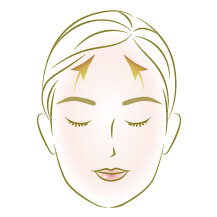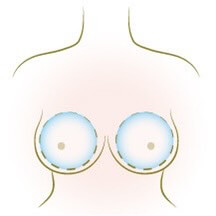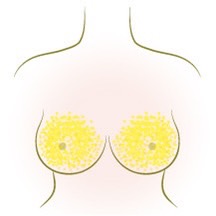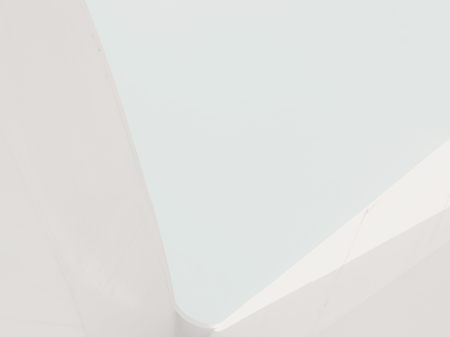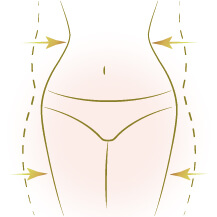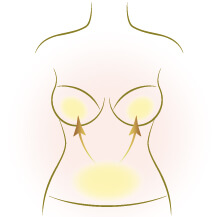Liposuction and body contouring surgery
Belly Lift Sculpting Surgery
LIPOSUCTION & SCULPTING
LIPOSUCTION & SCULPTING
Belly Lift Sculpting Surgery
- Principle
- Before and After
- Case Study
Bariatric surgery is NOT what belly lift sculpting is!
First, it’s important to understand that having an abdominal facelift won’t help you lose weight. Changes in food, activity, and lifestyle are still necessary for weight loss. Even medicines and surgery are required for those who are morbidly obese to lose the optimum amount of weight.
Belly Sculpting is not a procedure for shedding pounds! The final stretch of weight loss, though!
Tummy tuck surgery: What is it?
Tummy tuck surgery, often referred to as abdominal face lift sculpture surgery, uses surgical techniques to suture and divide the rectus abdominis fascia, remove the abdominal epidermis, and remove subcutaneous fat that has accumulated in the abdomen and waist with liposuction. In most cases, postpartum and weight loss are to blame for this extra skin and fat.
The primary goal of abdominal facelift sculpture surgery is to partially remove the “subcutaneous fat” and unattractive collected epidermis. It also separates and restores the rectus abdominis fascia. Reminding the visitors who are considering abdominal face lift sculpture surgery that maintaining a healthy weight after surgery and combining it with regular exercise will help them reach their ideal body shape is vital. Weight loss is required because abdominal facelift and sculpture surgery are ineffective for treating intra-abdominal fat.
The primary goal of abdominal facelift sculpture surgery is to partially remove the “subcutaneous fat” and unattractive collected epidermis. It also separates and restores the rectus abdominis fascia. Reminding the visitors who are considering abdominal face lift sculpture surgery that maintaining a healthy weight after surgery and combining it with regular exercise will help them reach their ideal body shape is vital. Weight loss is required because abdominal facelift and sculpture surgery are ineffective for treating intra-abdominal fat.
Who is suitable for tummy tuck surgery?
Patients who have uneven fat deposits on their belly and waist and epidermal cells are good candidates for abdominal lifting sculpture surgery. It is challenging for customers with these issues to wear stylish swimwear and form-fitting clothing since these epidermal and fat accumulations generate ugly body lines on the waist and abdomen. Due to too much epidermis, clothes might potentially infect people and create eczema.
Customers who want to have a belly tuck to regain the abdomen’s beauty and contours. For six months to over a year, Dr. Chen will advise patients to maintain a healthy body weight within the recommended body mass index (BMI), after which they should have stomach pumping and sculpting surgery to get rid of any remaining local subcutaneous fat and surplus. belly skin that is loose. Following surgery, the best therapeutic results can be obtained by combining with a regular exercise regimen and normal lifestyle.
**The National Health Administration of Taiwan recommends that the BMI (weight (kg) divided by the square of height (meter)) for Chinese adults should be maintained between 18.5 (kg/㎡) and 24 (kg/㎡).
Customers who want to have a belly tuck to regain the abdomen’s beauty and contours. For six months to over a year, Dr. Chen will advise patients to maintain a healthy body weight within the recommended body mass index (BMI), after which they should have stomach pumping and sculpting surgery to get rid of any remaining local subcutaneous fat and surplus. belly skin that is loose. Following surgery, the best therapeutic results can be obtained by combining with a regular exercise regimen and normal lifestyle.
**The National Health Administration of Taiwan recommends that the BMI (weight (kg) divided by the square of height (meter)) for Chinese adults should be maintained between 18.5 (kg/㎡) and 24 (kg/㎡).
How is the tummy tuck surgery carried out?
Lower abdominal face lift and local liposuction sculpting lines are two abdominal face lift procedures that typically need to be done under general anesthesia. To lessen intraoperative blood loss and reflex pain, the doctor will first inject the diluted analgesic and hemostatic saline solution into the subcutaneous fat in the region where the epidermal excision and liposuction are planned.
Lower Belly Lift
The lower abdomen’s incision will be concealed where the bikini can cover.
Small abdominal facelift: The loose epidermal skin is excised and directly sutured;
Abdominal Facelift: For those with loose epigastric skin, a wider range of belly removal and sutures to separate the rectus abdominis fascia are required, and the position of the navel also needs to be changed.
Liposuction Sculpting Waist and Abdominal Lines
Near the liposuction site, which is simple to hide, several tiny incisions between 0.5 and 1 cm are made. A liposuction tube is then inserted through these tiny wounds to remove the local hyperplasia fat.
Lower Belly Lift
The lower abdomen’s incision will be concealed where the bikini can cover.
Small abdominal facelift: The loose epidermal skin is excised and directly sutured;
Abdominal Facelift: For those with loose epigastric skin, a wider range of belly removal and sutures to separate the rectus abdominis fascia are required, and the position of the navel also needs to be changed.
Liposuction Sculpting Waist and Abdominal Lines
Near the liposuction site, which is simple to hide, several tiny incisions between 0.5 and 1 cm are made. A liposuction tube is then inserted through these tiny wounds to remove the local hyperplasia fat.
Abdominal Facelift Comparison
| Lower Belly Lift | Liposuction Sculpting Waist and Abdominal Lines |
|
|---|---|---|
| Principle features | Removal of loose skin on the lower abdomen | Lax skin on the whole abdomen was separated, excised, and tightened; the rectus fascia was sutured. |
| Effects | Improves loose skin on lower abdomen only | Significantly improves overall abdominal relaxation |
| Incision | shorter, only in the lower abdomen | Longer, the navel position also needs to be redone |
| Suitable Candidate | Only loose skin on the lower abdomen | Entire abdominal relaxation, rectus abdominis separation |
| Recovery Period | faster | Acute swelling and bruising for 1-2 weeks. Stable and natural for more than 3 months |
Anesthesia and preoperative planning
1.Prior to surgery, pressure garments that must be worn after surgery should be
made (generally need to be worn for more than three months)
2. Before surgery, you must tell your doctor if you have any drug allergies.
3. Anticoagulant medication must be stopped a week prior to surgery in order to prevent intraoperative and postoperative bleeding.
4. Smoking should be avoided for at least two weeks before to and following surgery.
5. It is advised that medical professionals regulate and stabilize systemic disorders such as high blood pressure, heart disease, diabetes, abnormal thyroid function, etc. before you have surgery.
6. Please let your doctor know before surgery if you or anybody in your family has swollen feet or hypertrophic scars.
7. It is advised that liposuction and body contouring procedures be carried out under general anesthesia. Before the procedure, a simple EKG, chest X-ray, and blood collection are necessary.
2. Before surgery, you must tell your doctor if you have any drug allergies.
3. Anticoagulant medication must be stopped a week prior to surgery in order to prevent intraoperative and postoperative bleeding.
4. Smoking should be avoided for at least two weeks before to and following surgery.
5. It is advised that medical professionals regulate and stabilize systemic disorders such as high blood pressure, heart disease, diabetes, abnormal thyroid function, etc. before you have surgery.
6. Please let your doctor know before surgery if you or anybody in your family has swollen feet or hypertrophic scars.
7. It is advised that liposuction and body contouring procedures be carried out under general anesthesia. Before the procedure, a simple EKG, chest X-ray, and blood collection are necessary.
Recovery process and post-operative care
1. To lessen discomfort and bruising, it is advised to apply ice for 10
minutes every hour for the first 5-7 days following eyelid surgery.
2. For three days following surgery, prophylactic oral antibiotics, anti-inflammatory, analgesic, detumescence, and other medications will be administered.
3. To replace the dressing, eye ointment will be prescribed by eyelid wound care. Once each in the morning and evening, change your clothes. Clean the site with normal saline or boiled water, remove any scabs or secretions, and then apply fresh ointment.
4. A week following the procedure, the sutures will be taken out.
5. It is advised to warm the skin (to the temperature of face wash water in the morning in winter) for 10 minutes every hour after the stitches are removed to hasten the healing of bruises.
6.Each person’s level of postoperative swelling and bruising is different. It usually becomes apparent three to four days following surgery, and most people can feel better approximately two weeks later.
7. After the procedure, you can wash your face as usual, take a bath, dry your skin right away, and then apply the ointment. But refrain from swimming, wading in the stream alongside the sea, and taking a dip in the hot springs.
8. After surgery, stay away from strenuous activities like hard training, running, mountaineering, rock climbing, etc. It may raise blood pressure, result in bleeding, or leave wounds open. The diet is generally healthy, but stay away from alcohol, smoke, and spicy food (too spicy and salty)
2. For three days following surgery, prophylactic oral antibiotics, anti-inflammatory, analgesic, detumescence, and other medications will be administered.
3. To replace the dressing, eye ointment will be prescribed by eyelid wound care. Once each in the morning and evening, change your clothes. Clean the site with normal saline or boiled water, remove any scabs or secretions, and then apply fresh ointment.
4. A week following the procedure, the sutures will be taken out.
5. It is advised to warm the skin (to the temperature of face wash water in the morning in winter) for 10 minutes every hour after the stitches are removed to hasten the healing of bruises.
6.Each person’s level of postoperative swelling and bruising is different. It usually becomes apparent three to four days following surgery, and most people can feel better approximately two weeks later.
7. After the procedure, you can wash your face as usual, take a bath, dry your skin right away, and then apply the ointment. But refrain from swimming, wading in the stream alongside the sea, and taking a dip in the hot springs.
8. After surgery, stay away from strenuous activities like hard training, running, mountaineering, rock climbing, etc. It may raise blood pressure, result in bleeding, or leave wounds open. The diet is generally healthy, but stay away from alcohol, smoke, and spicy food (too spicy and salty)
Sequelae and Complications
1.Asymmetry is the most frequent side effect of eyelid surgery, and
some individuals require revision surgery.
2. There is a danger of infection, hemorrhage, inadequate wound healing, etc. with any operation.
3. Although all surgeries leave scars, the plastic surgeon will meticulously stitch and use extremely thin sutures to tuck the scars into the creases of the skin and the borders of the hair, making them less noticeable and more difficult to locate. Even so, the scar may still be momentarily red and elevated (1-2 months after the operation) until it stabilizes, but after two to six months the scar will often gradually fade and become less noticeable.
2. There is a danger of infection, hemorrhage, inadequate wound healing, etc. with any operation.
3. Although all surgeries leave scars, the plastic surgeon will meticulously stitch and use extremely thin sutures to tuck the scars into the creases of the skin and the borders of the hair, making them less noticeable and more difficult to locate. Even so, the scar may still be momentarily red and elevated (1-2 months after the operation) until it stabilizes, but after two to six months the scar will often gradually fade and become less noticeable.







